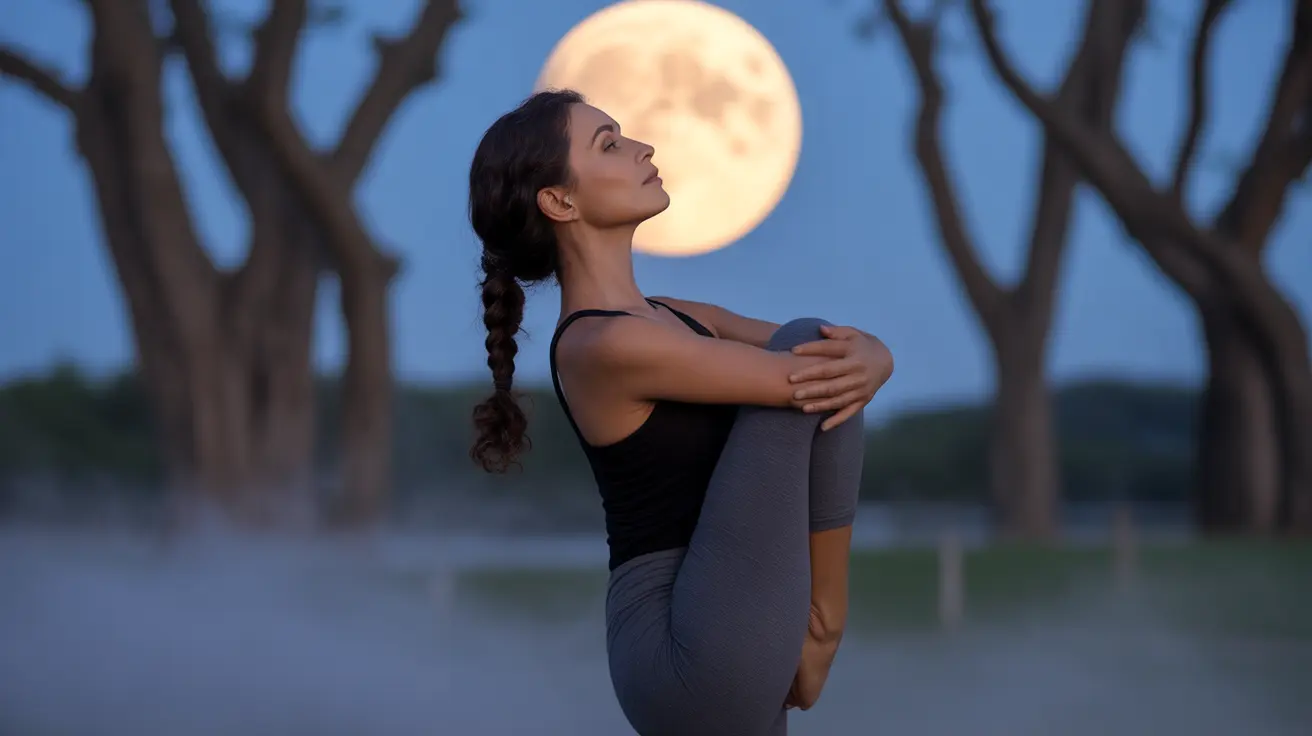The ancient practice of moon yoga offers a powerful way to align your body and spirit with the natural rhythms of the lunar cycle. By incorporating specific moon yoga poses into your practice during different phases of the moon, you can enhance your emotional well-being, boost energy levels, and deepen your connection to nature's cycles.
Understanding how to work with lunar energy through yoga can transform your practice into a more meaningful and intentional experience. Let's explore the most effective moon yoga poses for each phase and learn how to harness the moon's energy for optimal physical and spiritual benefits.
New Moon Yoga Poses: Embracing Introspection
The new moon phase calls for gentle, restorative poses that support inner reflection and intention setting. During this time, your practice should focus on grounding and centering poses:
- Child's Pose (Balasana)
- Forward Fold (Uttanasana)
- Reclined Bound Angle Pose (Supta Baddha Konasana)
- Legs Up the Wall (Viparita Karani)
These poses help create space for new beginnings and facilitate emotional release while maintaining a calm, receptive state of mind.
Waxing Moon: Building Energy and Strength
As the moon grows fuller, your practice can gradually incorporate more dynamic poses that build strength and vitality:
- Warrior I, II, and III (Virabhadrasana series)
- Tree Pose (Vrksasana)
- Standing Forward Bend (Uttanasana)
- Sun Salutations (Surya Namaskar)
These poses align with the increasing lunar energy, supporting personal growth and manifestation of intentions.
Full Moon: Peak Energy Practices
During the full moon, your practice can embrace more challenging poses that channel the moon's peak energy:
- Half Moon Pose (Ardha Chandrasana)
- Moon Salutation (Chandra Namaskar)
- Camel Pose (Ustrasana)
- Bridge Pose (Setu Bandha Sarvangasana)
These poses help balance the heightened energy while promoting emotional release and spiritual connection.
Waning Moon: Gentle Release and Reflection
As the moon's energy decreases, focus on poses that support letting go and surrender:
- Seated Forward Fold (Paschimottanasana)
- Pigeon Pose (Eka Pada Rajakapotasana)
- Corpse Pose (Savasana)
- Easy Pose (Sukhasana)
These poses facilitate the release of what no longer serves you while preparing for the next lunar cycle.
Frequently Asked Questions
What are the best moon yoga poses to practice during each phase of the lunar cycle?
During the new moon, practice restorative poses like Child's Pose and Legs Up the Wall. The waxing moon phase is ideal for strengthening poses like the Warrior series. Full moon practices benefit from balancing poses like Half Moon, while the waning moon calls for gentle forward folds and hip openers.
How can syncing yoga with the moon phases enhance emotional balance and energy levels?
Aligning your practice with lunar phases helps regulate your body's natural rhythms, promoting better emotional stability. The moon's energy influences our internal cycles, and matching your practice intensity to these phases can help optimize energy levels and emotional well-being.
What are gentle and restorative yoga poses recommended for the new moon phase?
The new moon phase is best suited for Child's Pose (Balasana), Forward Fold (Uttanasana), Legs Up the Wall (Viparita Karani), and Reclined Bound Angle Pose (Supta Baddha Konasana). These poses support introspection and renewal.
Which moon phase is ideal for strengthening and energizing yoga poses like Warrior and Tree Pose?
The waxing moon phase, when lunar energy is building, is the optimal time for strengthening poses like Warrior sequences and Tree Pose. This phase supports growth and increasing energy in your practice.
How does practicing moon-synced yoga support intention setting and emotional release?
Moon-synced yoga creates a structured framework for setting and manifesting intentions throughout the lunar cycle. The new moon supports planting seeds of intention, while the full moon facilitates emotional release and celebration of achievements. The waning moon helps in letting go of what no longer serves you.




